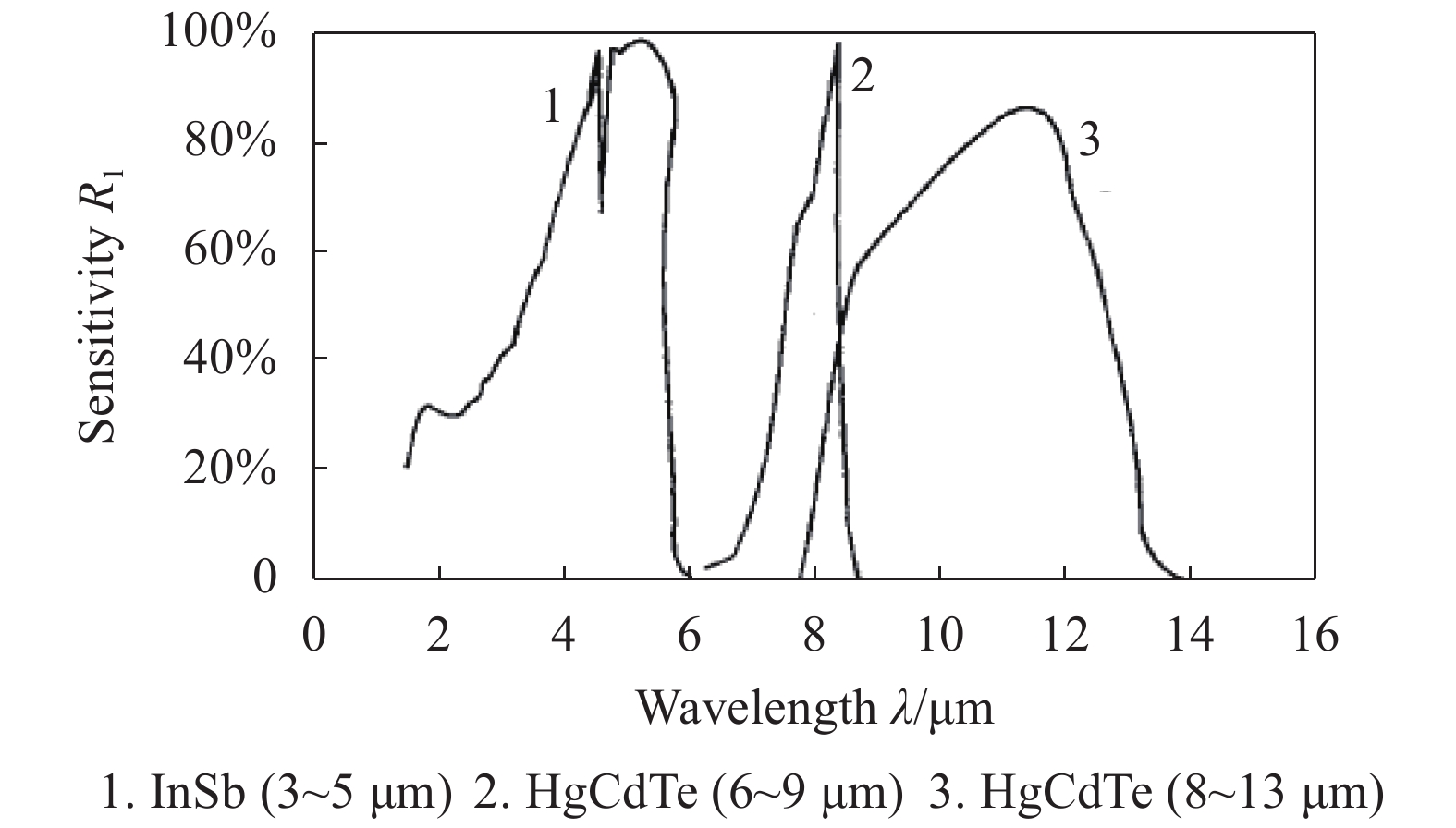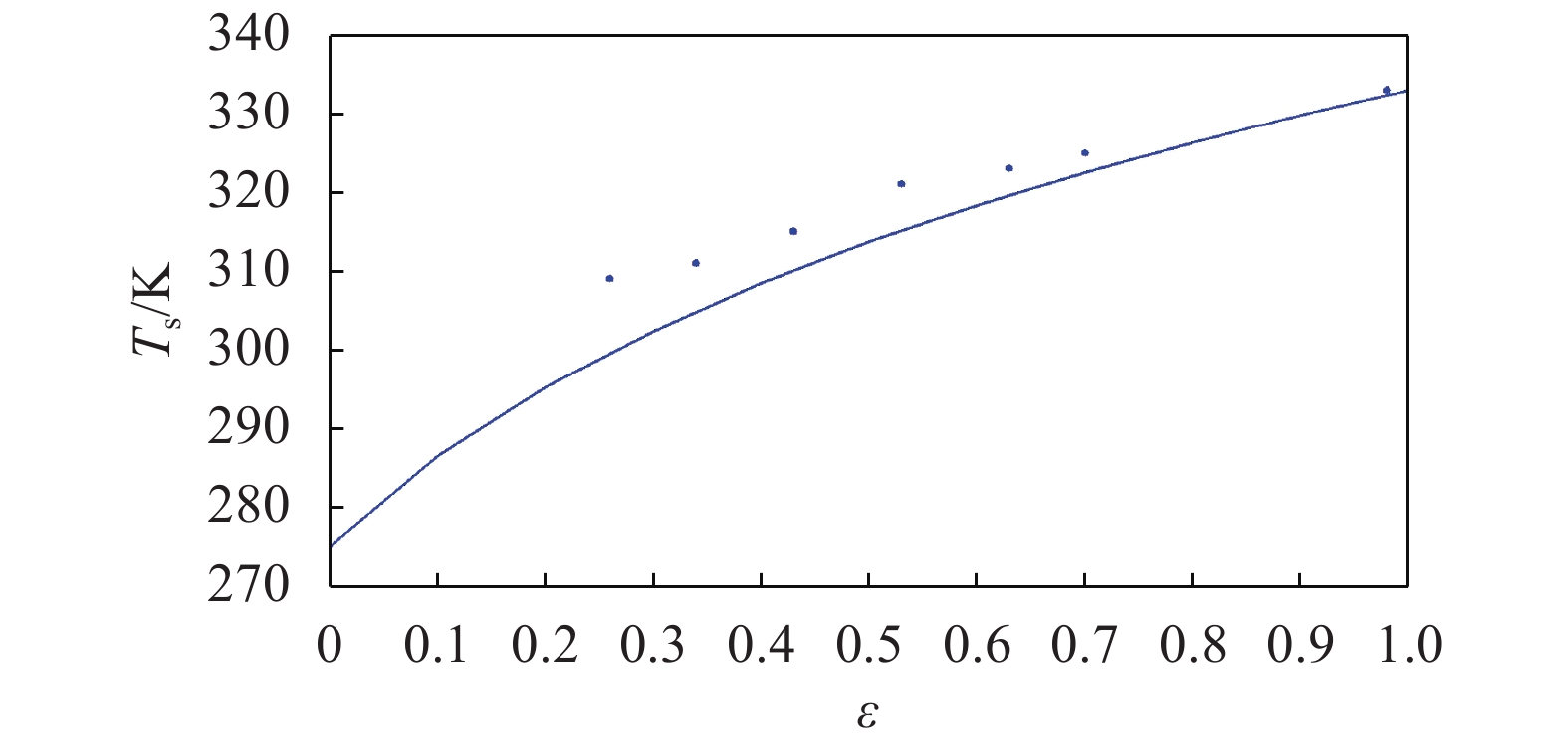-
热像仪测温除了具有一般红外辐射测温的非接触、测量范围大、响应时间短、反应快、灵敏度高等优点外,还有其独特的优势,也就是它具有成像功能,可以一次性对视场内目标区域的所有位置进行测温,每个像素点都对应一个测定的温度。由此利用热像仪可以在同一时间对大面积区域进行分布式测温。
热像仪是利用热辐射原理来工作的,其获得的信息实质就是所探测到的目标热辐射能量。热像仪就是根据所探测目标热辐射能量的大小、分布及与背景的反差来发现和识别目标的。热图像显示的实质就是各个像素点的热辐射能量值,根据热辐射规律,每一像素点的能量值和温度值具有由热辐射规律决定的唯一映像关系。通常情况下,到达热像仪的热辐射能量既包括目标自身的热辐射,也包含目标反射环境的热辐射。因此在一定条件下,环境的热辐射会对目标的红外辐射特性造成一定的影响,也会对热像仪测量的目标温度造成一定的影响。尤其是对于一些具有较低发射率的目标,环境辐射的影响会更为明显。
热像仪主要工作在两个波段,即3~5 μm的中红外波段和8~14 μm的远红外波段。由此热像仪测温既不是全波段辐射测温,也不是单个或多个离散的线光谱测温[1-4],因此不能用传统的辐射温度、亮温度和色温度等概念来研究它。热像仪测温的实质是一种在一定波段范围内的基于光谱响应的连续光谱测温。热像仪测温模型也必然会与其光谱响应特性、目标自身辐射的光谱特性和反射环境辐射的光谱特性密切相关。目前已有的热像仪测温模型研究,对于把目标假设为漫发射体的处理是可以的。但是在对目标反射的环境辐射的处理中,大都把入射环境辐射看做是均匀的或者是把目标看做了镜面反射体[5-10],这样做虽然可以大大简化模型,但是却远远不符合实际情况的。因为入射环境辐射是均匀的这一假设一般要在目标处于等温封闭腔的理想环境中才成立,而目标很多时候又是处于外部的空旷空间中的;另外大部分目标表面在与法线成50°的角度范围内,都可以近似看做漫反射体,这与镜面反射体的假设也不符。
文中将从热像仪测温原理入手,结合热像仪的光谱响应特性和辐射度学理论,综合考虑环境辐射的光谱特性与热像仪的光谱响应特性,建立热像仪对漫射体目标的测温模型,并在几种典型辐射源条件下进行了具体计算和测试,分析了环境辐射对热像仪测温的影响。
-
热像仪是根据被测目标的有效辐射来进行辐射测温的,到达热像仪的目标有效辐射包括目标自身辐射和反射的环境辐射两部分。被测目标的有效光谱辐射出射度可以表示为:
式中:
${T_{\rm o}}$ 为被测目标表面温度;${\varepsilon _\lambda }$ 为被测目标表面半球光谱发射率;${\rho _\lambda }$ 为被测目标表面半球光谱反射率;${E_\lambda }$ 为到达被测面的光谱辐射照度;下标b表示黑体。其中,等式右边第一项为目标单位面积自身发射的光谱辐射功率,等式右边第二项为目标单位面积反射环境的光谱辐射功率。辐射测温的一个重要假设就是被测目标为朗伯体,实际上自然界中大部分物体表面在一定观测角度范围内也都可近似看做不透明的漫射表面,此时有效辐射亮度为:
为了讨论的方便,暂时假设环境辐射源为单一辐射源,则根据辐射能传输原理可得:
式中:
${\tau _{{\rm c}\lambda }}$ 为处于被测目标和环境辐射源之间的大气透过率;${L_{{\rm c}\lambda }}$ 为环境辐射源光谱辐射亮度;${\varepsilon _{{\rm c}\lambda }}$ 为环境辐射源的光谱发射率;${T_{\rm u}}$ 为环境辐射源温度;$\displaystyle\int_A {\cos \theta {\rm d}\Omega }$ 为环境辐射源对被测物体表面所张的投影立体角,是一个纯几何量,取决于辐射源的大小以及辐射源与被测表面的相对空间位置,其含义如图1所示。作用于热像仪的辐射照度为:
式中:
${A_{\rm o}}$ 为热像仪最小空间张角所对应的目标的可视面积;$d$ 为该目标到测量仪器之间的距离;${\tau _{{\rm a}\lambda }}$ 为处于目标和探测器之间的大气光谱透射率。与辐射功率相对应的热像仪信号电压为:
式中:
${A_{\rm r}}$ 为热像仪探测器的接收面积;${R_\lambda }$ 为热像仪探测器的光谱响应度。把公式(4)代入公式(5)可得:热像仪的工作波段一般都较窄,可以认为发射率和透过率在其工作波段内与波长
$\lambda $ 无关,则有:令
如果环境辐射源可以近似为黑体,且距离被测目标较近,则可以忽略环境到目标之间大气对辐射衰减的影响,此时公式(9)可简化为:
又令
则有:
通常在一定条件下,
$k$ 对某台确定的热像仪为一个常值。令:则
${T_{\rm s}}$ 即为热像仪所显示的温度。对于
$f\left( T \right)$ ,由定义公式(11)可知当探测器确定,也就是其光谱响应${R_\lambda }$ 确定后,它就仅是温度的函数。由普朗克公式可得:式中:
${c_1}$ 、${c_2}$ 分别为第一、第二辐射常数。对于三种典型探测器的光谱响应${R_\lambda }$ 随波长的变化如图2所示。根据${R_\lambda }$ 随$\lambda $ 的变化关系,对$f\left( T \right)$ 积分,可得$f\left( T \right)$ 随温度的变化关系为:式中:对工作在8~13 μm波段的HgCdTe探测器,n值为4.09,c值为7.7116×10−9;对工作在6~9 μm波段的HgCdTe探测器,n值为5.33,c值为2.9259×10−12;对工作在3~5 μm波段的InSb探测器,n值为8.68,c值为6.3508×10−21[11]。
把公式(15)代入公式(13)得:
若环境辐射为多个辐射源入射,则有:
由以上分析可见,大气透过率、目标发射率、环境辐射源温度及其对被测目标所张的投影立体角都会对热像仪的测温结果产生影响。
需要说明的是,以上所建立的热像仪测温模型对目标和环境辐射源都接近于漫射灰体时是成立的,对于具有显著选择性辐射特征的目标和环境辐射源是不成立的。所幸的是大多数物体和自然环境辐射源在热像仪工作的3~5 μm和8~13 μm两个波段内都是可以近似为漫射灰体的,这也为热像仪测温工作提供了重要前提。
-
热像仪测温的典型环境辐射源包括地面辐射、云层辐射以及室内辐射等,显然这些环境辐射源在3~5 μm和8~13 μm两个波段内都可以近似为漫射灰体,甚至可以近似为黑体辐射,因此由普朗克公式可知它们的光谱特性区别主要体现在温度的差异上。同时由于这些环境辐射源通常都距离目标较近,因此在位于大气窗口的3~5 μm和8~13 μm两个波段内的大气衰减也可以忽略。故由公式(10)和公式(16)可知,环境辐射对热像仪测温的影响主要体现在目标发射率、环境辐射源对被测目标所张的投影立体角以及环境辐射源的温度。为了便于分析,下面分别针对地面辐射、云层辐射以及室内辐射分别讨论其对热像仪测温的影响。
-
对于地面,可以近似为平行于水平面的无穷大表面,假设被测目标表面与地面夹角为
$\beta $ ,则此时可以根据公式(10)进行积分,具体积分过程非常繁琐,在此仅给出结果为:式中:
$\;\beta $ 为被测目标表面与地面夹角。把公式(18)代入公式(16)可得:
式中:
${T_{\rm ue}}$ 为地面的温度。由公式(19)可见,当热像仪在室外测温时,地面对热像仪的影响与目标的红外发射率、地面温度以及被测目标表面与地面的夹角有关。
对于浓厚云层,也可以近似为平行于水平面的无穷大表面,假设被测目标表面与地面夹角为
$\beta $ ,则同样根据公式(10)积分可得结果为:把公式(20)代入公式(16)可得:
式中:
$\;\beta $ 为被测目标表面与地面夹角;${T_{\rm uc}}$ 为云层的温度。由公式(21)可见,当热像仪在室外测温时,云层对热像仪的影响与目标的红外发射率、云层温度以及被测目标表面与地面的夹角有关。
如果在室外测温时同时考虑地面和浓厚云层的影响,则有:
式中:
${T_{\rm ue}}$ 为地面温度;${T_{\rm uc}}$ 为云层温度。由公式(22)可见,当热像仪在室外测温时,地面和云层对热像仪的影响与目标的红外发射率、地面温度、云层温度以及被测目标表面与地面的夹角有关。
为了讨论的方便,取
$\;\beta $ 角为90°,也就是被测目标表面与地面垂直;同时假设热像仪与被测目标的距离较近,此时大气的影响可忽略不计,即${\tau _{\rm a}} = 1$ 。一般来说,云层的温度近似稳定在−10 ℃,地面的温度会随着季节和时间而变化,下面以地面温度25 ℃为例来进行分析讨论。图3(a)给出了晴朗天空下目标不同温度与发射率下热像仪的测温结果。由图3(a)可以看出,当发射率为1也即目标为黑体时,热像仪测得的温度即为目标的真实温度,不受地面环境辐射的影响;当发射率为0也即目标为全反射体时,热像仪测得的温度是一个定值,与目标的温度无关,纯粹取决于对地面环境辐射的反射。当发射率在0~1之间时,则有如下结论:当目标温度远低于地面背景温度时,热像仪测得的温度要高于目标实际温度,而且随着发射率的减小,测得的温度成上升趋势;当目标温度远高于地面背景温度时,热像仪测得的温度要低于目标实际温度,而且随着发射率的减小,测得的温度呈下降趋势。由此还可知:当目标的温度处于一个特定值时,热像仪测得的温度与发射率无关,是一个定值,这个温度值正是当目标发射率为0时热像仪所获得的温度,在计算中的结果为2 ℃ (275 K)。由此可知,在此种情况下,当目标温度小于2 ℃时,热像仪测得的温度要高于目标实际温度,而且随着发射率的减小,测得的温度呈上升趋势;当目标温度远大于2 ℃时,热像仪测得的温度要低于目标实际温度,而且随着发射率的减小,测得的温度呈下降趋势。图3(b)给出了有浓厚云层时目标不同温度与发射率下热像仪测温结果。由图3(b)可以看出,由于云层的影响,使得入射到目标表面的环境辐射增加,进而增大了环境辐射对热像仪测温的影响, 当目标发射率为0时,热像仪所获得的温度为11.5 ℃ (284.5 K),比无云层时要高出9.5 ℃。也就意味着在此种情况下,当目标温度小于9.5 ℃时,热像仪测得的温度要高于目标实际温度,而且随着发射率的减小,测得的温度呈上升趋势;当目标温度远大于9.5 ℃时,热像仪测得的温度要低于目标实际温度,而且随着发射率的减小,测得的温度呈下降趋势。
为了验证以上结果的可信性,设置以下实验:把控温加热板实际温度
${T_{\rm o}}$ 设置为60 ℃,在晴朗夜空下垂直放置于温度为25 ℃的草地背景中,把制作的发射率参数分别为0.26,0.34,0.43,0.53,0.63,0.70,0.95几种薄膜材料分别覆盖到其表面,维持加热板的温度60 ℃不变,待达到热平衡后用中波热像仪观测其温度${T_{\rm s}}$ 。图4给出了测试场景的热像图,图5给出了测试结果,其中实线为计算曲线。由图可以看出,实测数据与理论计算结果基本吻合,验证了以上模型的正确性。另外在实验草地背景的周围还存在一定高度的建筑物和树木,它们的辐射也会产生影响,因此,使得测试数据均略高于理论计算结果。 -
对于热像仪在室内测温时所处的环境,假设各个壁面的温度都相等,此时可以看做房间的所有壁面构成了一个等温的空腔,则根据公式(10)积分可得结果为:
把公式(23)的结果代入公式(16)可得:
式中:
${T_\rm u}$ 为房间壁面温度。由公式(24)可见,当热像仪在室内测温时,房间壁面辐射对热像仪的影响与目标的红外发射率和壁面温度有关,与被测目标表面与地面的夹角无关。
以壁面温度25 ℃为例,图6给出了目标不同温度与发射率下热像仪的测温结果。由图6可以看出,在室内用热像仪测温时,当目标发射率为0或者目标的实际温度等于房间壁面的温度25 ℃时,热像仪测得的目标温度与发射率无关,为目标的实际温度25 ℃。当目标的发射率在0~1之间时,若目标温度小于房间壁面温度时,热像仪测得的温度要高于目标实际温度,而且随着发射率的减小,测得的温度呈上升趋势;若目标温度远大于房间壁面温度时,热像仪测得的温度要低于目标实际温度,而且随着发射率的减小,测得的温度呈下降趋势。
-
由以上讨论结果可见,无论在室内还是在室外,壁面、云层和地面等环境辐射源辐射对热像仪测温的影响主要取决于目标的红外发射率和环境辐射源的温度,目标发射率越小,环境辐射源温度越高,影响越大;除此之外,在室外时,地面或云层对热像仪的影响还与被测目标表面与地面的夹角有关。
另外,若附近有高大建筑物也会对热像仪测温产生影响,也可根据公式(10)和公式(16)进行具体估算。太阳辐射由于其温度远远超出了地球上自然辐射源的温度,同时其到达目标前要受到大气传输衰减的影响,而且太阳光线与目标表面的夹角会随着时间的变化而变化,因此要更复杂一些,需要单独讨论。实际上太阳辐射辐射的影响主要体现在3~5 μm中红外波段,在8~13 μm波段的影响可以忽略不计。限于篇幅,在此不再一一详述。
Influence of environmental radiation on temperature measurement of thermal imager
doi: 10.3788/IRLA20210159
- Received Date: 2021-03-10
- Rev Recd Date: 2021-04-20
- Publish Date: 2022-04-07
-
Key words:
- infrared /
- thermal imager /
- temperature measurement /
- environmental radiation /
- projection solid angle
Abstract: Different from the traditional discrete spectrum temperature measurement, the essence of thermal imager temperature measurement is a kind of continuous spectrum temperature measurement based on the spectral response of detector in a certain band. In addition to the emissivity of the target will affect the relationship between the temperature measured by the thermal imager and the real temperature, the reflected environmental radiation is also an important factor affecting the temperature measurement results of the thermal imager. The current research on the temperature measurement accuracy of thermal imager, in the processing of the environmental radiation reflected by the target, mostly regard the incident environmental radiation as uniform or the target as a mirror reflector. Although this can greatly simplify the model, it is far from the actual situation. Based on the principle of radiometry and the spectral response characteristics of thermal imager detector, the temperature measurement model of the thermal imager for the diffuse target was established. The results show that the influence of environmental radiation on the temperature measurement of thermal imager is not only related to the reflectivity of the target and the temperature of the environmental radiation source, but also related to the projection solid angle of the environmental radiation source on the target. According to the model, the influencing factors of the temperature measurement of the thermal imager were analyzed. Then the influence of several typical environmental radiation conditions on the temperature measurement of the thermal imager was calculated and analyzed, and the experimental verification was carried out. On the one hand, the results can provide a reference for the design of temperature measurement of thermal imager, on the other hand, it can provide a theoretical basis for the error estimation between temperature measurement of thermal imager and real temperature under complex environmental conditions.



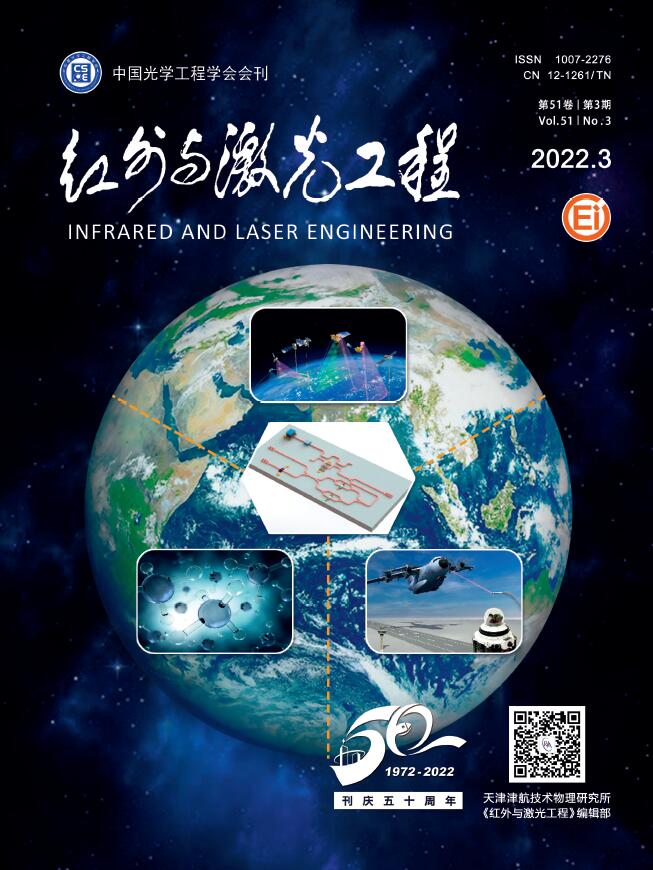















































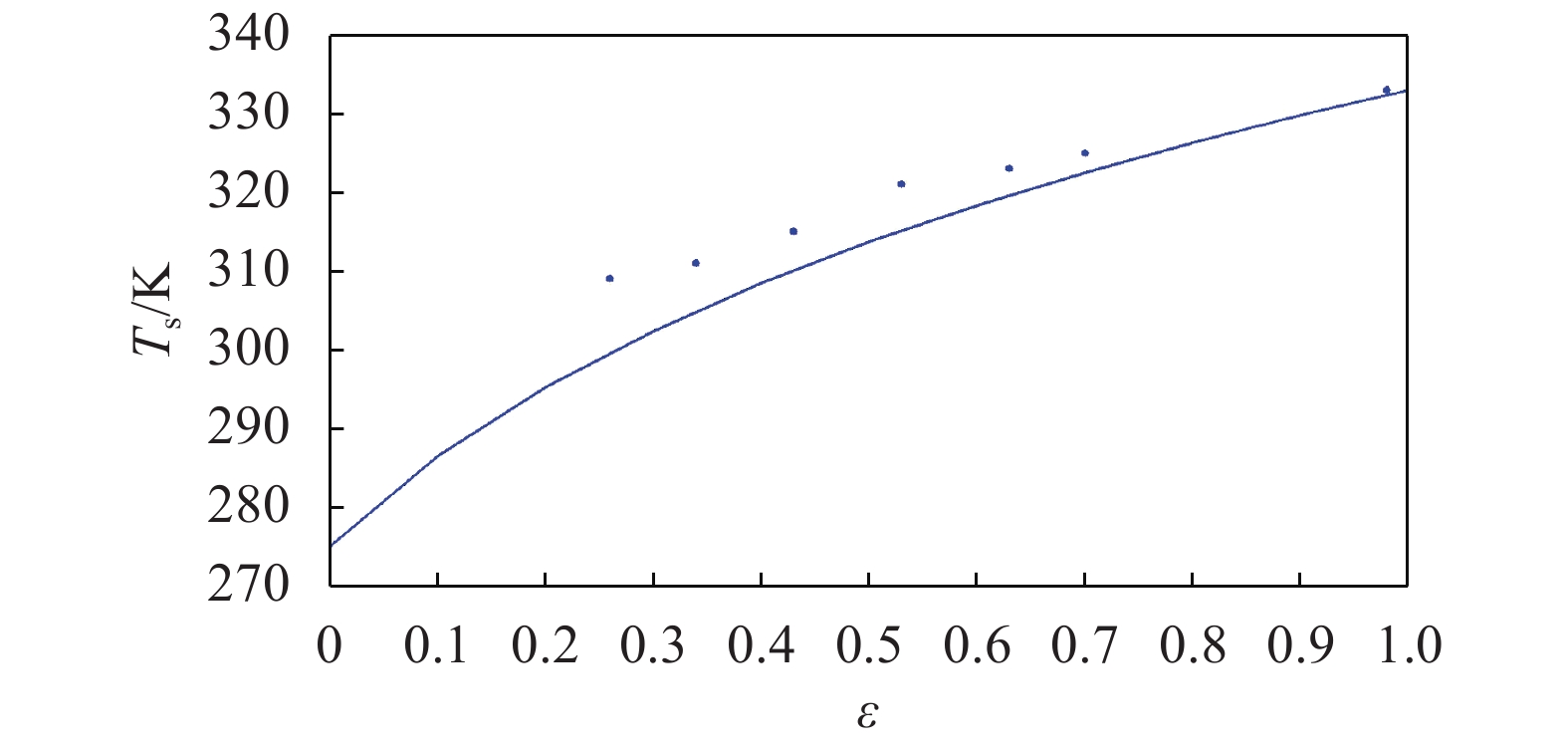

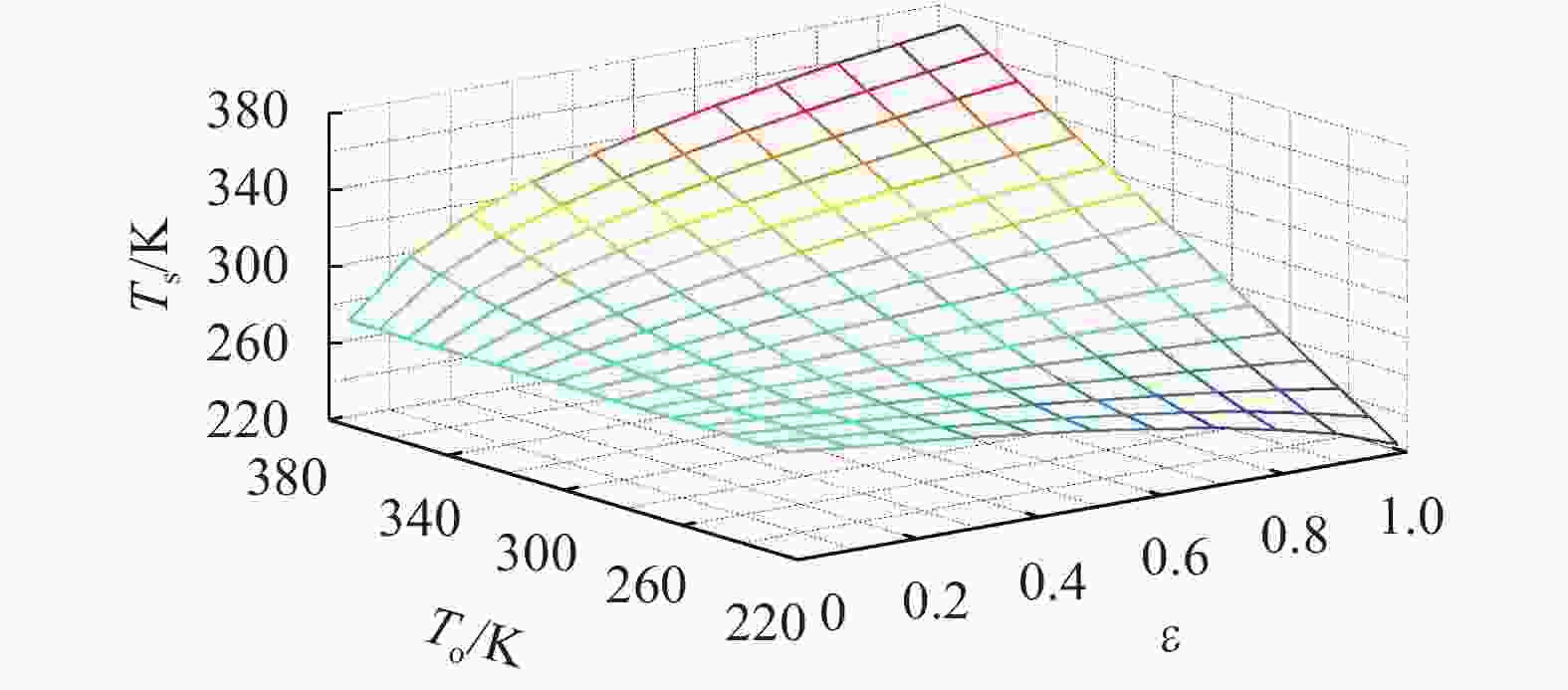

 DownLoad:
DownLoad:
